Like Chinese Hanfu costumes, ancient Chinese hairstyles also have a long history. The hair is placed at the head of the body, and it is the key to showing the beauty of the human body.
The ancient Chinese hairstyles culture is diverse and gorgeous, a special and wonderful part of Chinese culture, and likewise, it shows the unique aesthetics of China that has rich content.
This article contains female ancient Chinese hairstyles and male ancient Chinese hairstyles, and introduces the traditional hairstyle characteristics of different historical periods through the order of dynasties. We hope that you can have a new understanding of Chinese hairstyles through the article.
Let's get started!
Female Ancient Chinese Hairstyles
Although there are many styles of historical hair bun, depending on the person, the part of the bun is different and can be divided into two categories: one is the hanging bun located at the back of the neck, mainly in the Warring States and Qin and Han dynasties.
The other is the high bun on the top of the head, popular in the Eastern Han Dynasty, Wei, and Jin Dynasty, and reached its peak in the Tang and Song Dynasties, with many variations that are dazzling.
Female hairstyles in the Pre-Qin period
In the primitive society, there were three main ancient Chinese hairstyles for women: draped hair, Chui Ji (椎髻, one of the oldest buns in China), and braided hair.
In the Zhou Dynasty, most women grew their hair and wore it in a bun and fixed it with Ji (筓), and it was also customary to wear a high bun, and women in the imperial court would add jewelry and flowers to the bun to make it more beautiful.
To the Spring and autumn and Warring States period, the hair bun is more popular, and the trend of hair bun gradually tilted back with the development of time, and between the majority of women's pursuit of beauty, the wig named Di (髢) also appeared, equivalent to the modern Hanfu wig or hairpiece.
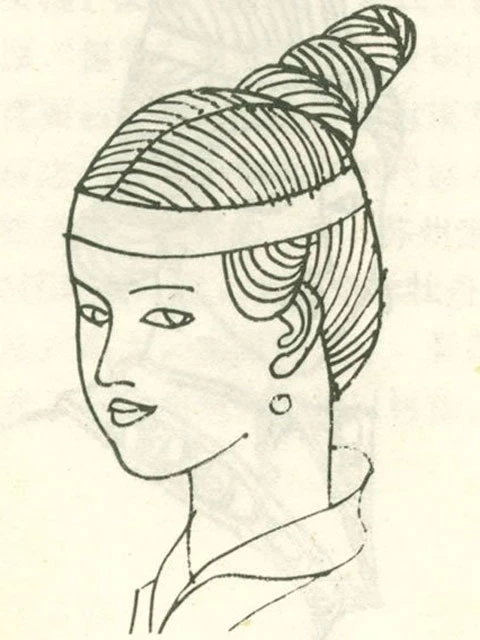
Chui Ji
Female hairstyles in the Qin and Han Dynasties
During the Qin Dynasty, there were a number of innovative hair bun styles, such as the Wang Xian Jiu Huan Ji (望仙九鬟髻, nice ring buns), the Ling Yun Ji (凌云髻), the Chui Yun Ji (垂云髻) and the Shen Xian Ji (神仙髻).
Some of the buns were designed with a symbolic meaning. For example, the Wang Xian Jiu Huan Ji, which was popular among noble women, Huan means ring bun, nine bun means ring interlocked, to more for the noble.
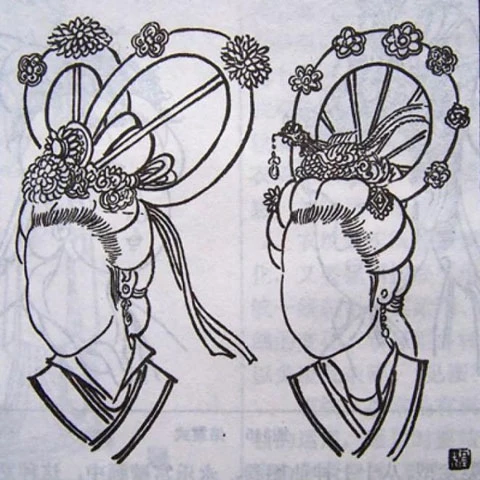
Wang Xian Jiu Huan Ji
To the Han Dynasty, as the famous unification of the Chinese history of the dynasty, the hairstyle of women at this time has been unprecedented development, but mainly or the royal nobility to promote, and the ordinary women used hairpin through the hair, mostly "Chui Ji"; and Han Dynasty women like to leave a small lock of hair from the bun, hanging in the back of the skull, named "Chui Bin (垂鬓)".
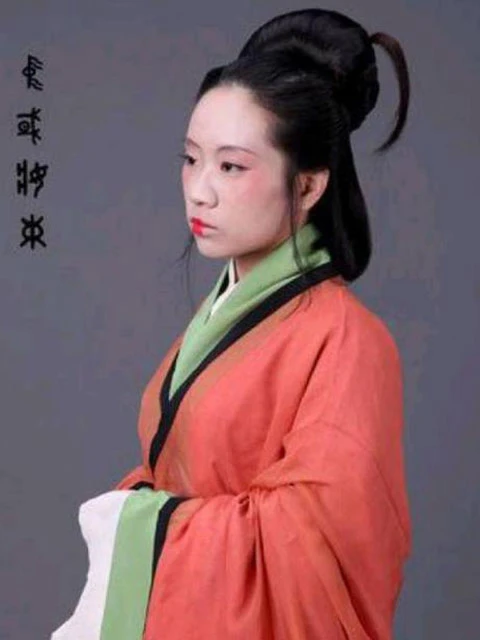
Chui Bin
In the palace, women mostly kept high buns, whether concubines or courtesans. Other famous models are also very much, such as Jing Hong Ji (惊鸿髻), three-ring bun (三环髻), nine ring bun (九环髻), Fei Xian Ji (飞仙髻), Duo Ma Ji (堕马髻), etc.
Details about the Duo Ma Ji: is a kind of bun hanging on one side of the hair. The general method of combing hair is to gather the hair into a knot, pull the knot into large vertebrae, knotted silk rope in the vertebrae, fall on the side of the head or the back of the head.
Duo Ma Ji began in the Han Dynasty its style as riding a horse falling state. This is the most distinctive and historically most vital hairstyle of the time. Since the beginning of the Han Dynasty, until the Qing Dynasty also has, the form of the generations is slightly different, but the side and upside-down form remains unchanged.
Overall, in the Qin and Han dynasties, the flat bun was the more popular hairstyle for ordinary people, while other fashionable styles such as the high bun were mostly seen among the nobility.
Female hairstyles in the Wei, Jin, North, and South Dynasties
In this period, women's hairstyles can be said to be more diverse and decorative, the more famous styles are the Fei Tian Ji (飞天髻), Ling She Ji (灵蛇髻), Yun Ji (云髻), Shi Zi Ji (十字髻), etc.
Fei Tian Ji is a style where the hair is concentrated on the top of the head, divided into several strands, and then coiled into a circle, towering over the top. This was a popular hairstyle during the Southern Dynasty.
Ling She Ji, as the name, is twisted and coiled like the body of a snake, and is dynamic and versatile.
Yun Ji is the most typical hairstyle among women in the Wei Jin and North and South Dynasties, which is to comb the sideburns into a thin piece, like cicada wings to give people a sense of floating ethereal beauty.
Shi Zi Ji is a bun style named after the bun is in the shape of a "十". Popular in the Wei Jin and North and South Dynasties period, after the Wei Jin dynasties are rare.
This hairstyle of the braided plate method is: first the hair coiled into a "十" line of the bun, and then the rest of the hair in the head on both sides of the plate a hair straight down to the shoulder, with Hanfu hairpin fixed.
This period of hairstyle is also influenced by the Western minority and Buddhism, there is a single-ring bun, double-ring bun.
Female hairstyles in the Sui and Tang Dynasties
In this period, it can be said that the ancient women's hairstyle has achieved the role of inheriting the tradition of the previous generations, but also constantly new and different.
From the Sui Dynasty to the Tang Dynasty, the hairstyle became more and more "towering" from the flat-top style, and the forms became more and more abundant.
Of course, the general women's hair is not enough to reach this height, so the wig is very popular, in the hair with a pad of wood to make a false crown, hair cushion, etc., the head bun cushion high, Yang Guifei loved to use the wig, then called it Yi Ji (义髻).
And the ear sideburns and different hair bun style-linked together, so that the sideburns vary in thickness, sparse and dense, so the formation of sideburn ornaments, such as cicada sideburns, cloud sideburns, snow sideburns, light sideburns, round sideburns.
During the Tang Dynasty, the most popular one was the Wo Zhui Ji (倭坠髻), where the hair was combed from the temples to the back of the head, then swept upwards and pulled into one or two buns on top of the head that was lowered towards the front of the forehead.
Most of the terracotta figurines of women in the Tang Dynasty were excavated in the Wo Zhui Ji.
We can also feel the charm of the Tang Dynasty hairstyles from a large number of unearthed Tang Dynasty artifacts.
Female hairstyles in the Song Dynasty
Most of the ancient Chinese hairstyles of Song women were inherited from the late Tang and Five Dynasties, and high buns were the norm.
One of the high buns has become a sign of the times: Chaotian Ji (朝天髻), is an ancient women's hairstyle, a kind of high bun style, popular among the folk.
It is worth mentioning that the Song dynasty women to a high bun for beauty, and even some people have combed more than two feet high bun, so there is the use of wigs.
As you can imagine, the economy was booming and the market life was lively, so women with well-dressed hairstyles walked down the street to show off their beauty.
Of course, in addition to Chaotian Ji, there are also flower bun, Tong Xin Ji (同心髻), Ba Jiao Ji (芭蕉髻), Bao Ji (包髻) and so on.
Female hairstyles in the Ming and Qing Dynasties
From the beginning of the Ming Dynasty, it paid much attention to the protection of Han culture, and in this regard, the hairstyle was adhering to the principle of "following the Zhou and Han dynasties and continuing the Tang and Song dynasties".
There were new styles such as Tao Xin Ji (桃心髻), San Liu Tou (三绺头) and imitating Han dynasty Duo Ma Ji.
The Tao Xin Ji: a popular hairstyle in the Ming dynasty, women first had to comb the bun into a flat circle, and then decorate the top of the bun with flowers.
This hairstyle kept changing and evolved into a gold and silver wire knot, and the bun was combed high, and the top of the bun was decorated with beads and jewels.
San Liu Tou had a prototype in the Tang and Song dynasties, and later developed to a new height in the Ming Dynasty, which also played a fundamental role in the hairstyle of women after the Qing Dynasty and even in modern times.
San Liu Tou is characterized by the hair being divided into three locks to comb separately, and finally converge together into a bun, so can make a variety of changes.
In addition, the Ming Dynasty women used to match the hairstyle of the headdress: Moe (抹额), Diji (䯼髻), Feng Guan (凤冠), etc.
The hairstyle of Qing dynasty aristocratic women is more representative.
In the early Qing dynasty, most of the Qi women's styling is wrapped head, pan head, to the middle and late appear we are familiar with like Yi Zi Tou (一字头), Liang Ba Tou (两把头), Qi Tou (旗头) such as the court styling.
Yi Zi Tou, as the name, has the shape of "一", flatter, is imitating the shape of jade "Ruyi".
Liang Ba Tou, its combing method is hair bundled on top of the head, divided into two locks, knotted into a long horizontal bun, and then the rest of the hair knotted into a "swallow tail" type of long flat bun, so pressed on the back of the neck collar, so that the neck is straight.
Then supplemented with some small hair accessories, the overall look dignified and clean, giving people a sense of gentle and strict.
Qi Tou, also called "Da La Chi (大拉翅)", invented for the Empress Dowager Cixi, common Da La Chi is a fan-shaped hollow hard shell, about a foot in height, the bottom is the size of the head round hoop.
Its wire for the frame, cloth gusset (paste glued up multi-layer cloth) to do tire, the surface wrapped in black satin or velvet, and this is the most common Qing Palace hairstyle in the film and television drama.
Next is about traditional ancient Chinese hairstyles for men.
Male Ancient Chinese Hairstyles
First of all, in ancient times, men wore their hair as well as women. However, as men grew older and became the subjects of power at the time, this change in hairstyle became more and more closely related to political etiquette.
One of them was the important system of Guan Li (冠礼).
Guan Li
The Guan Li (冠礼, crown ceremony) system was initially established in the Xia and Shang dynasties, gradually improved in the Zhou Dynasty, and was incorporated into the ritual rule at the turn of the Spring and Autumn and the Warring States, and then developed and improved in successive dynasties.
As early as in the Zhou Dynasty, men had to perform the rite of passage at the age of 20, and the ceremony was mainly Guan Li, and need crowning three times, indicating that they had the power to participate in management, serve the country and participate in sacrifices.
The ceremony of crowning is very grand: first, an auspicious day is selected, guests are chosen to attend the ceremony, and offerings are prepared, then the person to be crowned is led by his father and brother into the Imperial Temple to offer sacrifices to heaven and earth and the ancestors. When the crown ceremony is carried out, the crown is added three times, that is, three hats are put on in turn.
- The first crown is Zi Bu Guan (缁布冠, made of black linen), indicating that he has become a man, with all the responsibilities and rights of an adult.
- The second crown is Pi Bian (皮弁, made of white deerskin), indicating that he has to serve in the military.
- The third crown is Jue Bian (爵弁), indicating that he has the right to participate in the rituals from now on.
But crowning was generally done by the nobility, and not every man in ancient times could be crowned. So what did the common people wear? Generally, they would wear a kind of conical cap called Ze (帻), covering the hair bun, first seen in the Han Dynasty.
After that, the conical cap gradually changed and became a more common headscarf. Men also wore ancient hair ornament Ji (筓) or Kui (頍) to fix the crown.
Hair binding can be divided into full binding and half binding half phi, mainly full binding, and we will see many male costume characters in the chinese drama in order to be more beautiful and look ethereal, more than half binding half phi shape.
In short, Guan Li is a sign of adulthood, and the crown has become an important costume for adult men of the nobility. On occasions when the crown was required, it was often seen as an indecent act if the crown was not worn.
At the same time, the crown system symbolized the hierarchy and the ruling spirit of feudal society, and was an important reflection of Confucianism at that time, as well as a sign of political reaction to the ritual system.
Male hairstyles in the Shang and Zhou periods
During this period, men's hairstyle was relatively or quite loose, hair was spread out.
Until the Zhou Dynasty, the existence of rituals was established and the hairstyle was rigidly defined. Adult men were required to bun their hair, that is, to comb their hair to the top of their heads and bun it up. The noblemen usually wore a crown to fix it, while the casual style is wrapped with a headscarf.
Male hairstyles in Qin Dynasty
After the Qin and Han dynasties, men mostly took bun hair, and the number of those who wore hair was decreasing. At that time, people gradually evolved from draping their hair to bundling their hair, except for Taoist priests who liked to drape their hair, minors also mostly draped their hair until the time of the crown ceremony.
Officers wore crowns, but soldiers did not. Men of the Qin Dynasty would put their entire hair together and the back of their heads would be braided to follow the direction of their hair.
The hairstyle of Qin Dynasty men can be clearly seen according to the terracotta warriors, the main elements of which are the middle parting, slanting bun, and wearing a crown.
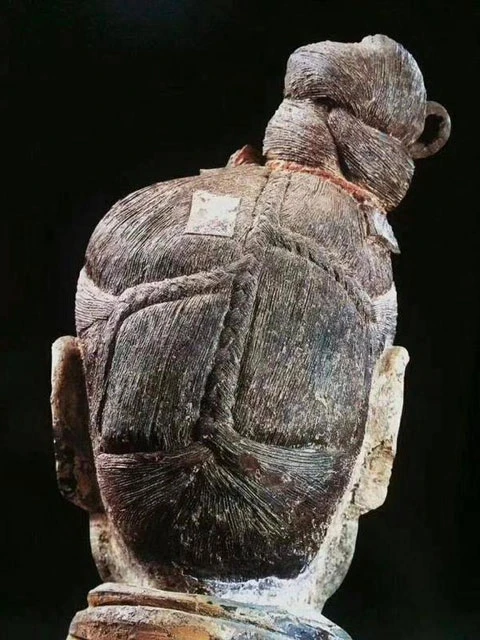
The clear direction of hair braids on the back of the terracotta warriors
"The Qin Empire" is arguably one of the best costume dramas that restore the costumes of the Qin Dynasty. The hairstyle in the drama is different from other updos because there will be a middle part in the front and then a crown, which looks very masculine and tough.
Male hairstyles in the Han Dynasty
The hairstyle of men in the Han Dynasty did not change much, and the scribes at that time liked to wear headscarves, and the most classic one was "Yu Shan Guan Jin (羽扇纶巾, holding a feather fan and wearing a headscarf with green silk ribbon)".
Male hairstyles in the Tang Dynasty
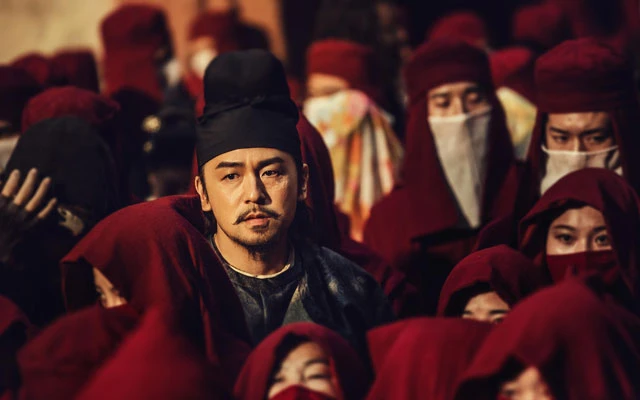
The Futou in the The Longest Day In Chang'an
In the Tang dynasty, men bundle hair or like to wear a headscarf: Futou (幞头), also known as Zhe Shang Jin (折上巾), was a kind of sarong soft scarf that wrapped around the head.
The Futou in Tang Dynasty was dome-shaped with two legs hanging down, somewhat like the ears of a rabbit. Because the sarong used in Futou was usually green and black, it was developed into "Wuzha Mao" in the later period.
Male hairstyles in the Song Dynasty
The Tang Dynasty was a very luxurious dynasty, while the Song Dynasty was just the opposite, most of the emperors in the Song Dynasty were very frugal, and when the emperors were frugal, the ministers and subjects were naturally frugal too.
Like the Tang Dynasty, men in the Song Dynasty also wore Futou, but there were still differences with the Tang Dynasty.
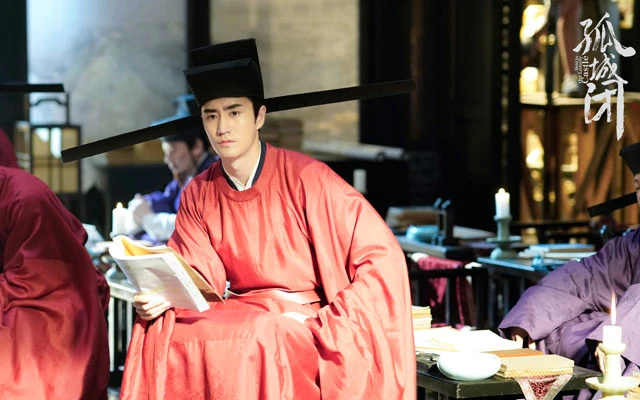
The Futou in the Serenade of Peaceful Joy
The Futou of the Song Dynasty was flat-topped with two flat feet, could be taken off and worn at will. If not wearing a hat in the Song Dynasty, it can be bundle of hair or half bundle of hair.
It is worth mentioning that at that time, many men in society were very popular wearing flowers in the head and thought that looked very dashing.
Male hairstyles in the Yuan Dynasty
The Yuan Dynasty, the first regime established by a minority group to rule the Central Plains, had a very different hairstyle from that of the Han Chinese. The hairstyle of Mongolian men in the Yuan Dynasty was also unique.
The custom of scalping and braiding the hair of men in the Yuan Dynasty was very common, scalping and braiding the hair is to shave the hair on the top of the head, leaving only the two sideburns and a small amount of hair on the forehead twisted together into pigtails, which can be seen in a large number of historical records and pictorial materials.
Male hairstyles in the Ming Dynasty
In the middle of the Ming Dynasty, the phenomenon of adult men knotting braids gradually disappeared, and the general working people were pulling their hair into a three-strand or two-strand bun at the back of their heads.
Readers, Xiucai, official nobles, etc. usually knotted their hair in a bun at the top of their heads, and had to wrap a Wang Jin (网巾, net scarf)around their heads to fix their hair.
Male hairstyles in the Qing Dynasty
After the fall of the Ming Dynasty, the Qing Dynasty became the last minority regime in China's feudal era, and then forced men to shave their hair.
The hairstyle of Qing Dynasty men is in accordance with the habits of the Manchu people, indicating that after the Manchu people entered the Central Plains, all ethnic groups to the Manchu people's subservience. This hairstyle can not simply be called "braid", but shave off the front of the hair, the back of the hair into a braid.
In fact, the early and mid-Qing Dynasty hairstyles are not the same as the popular film and television dramas, the early Qing Dynasty hairstyle was "Jin Qian Shu Wei Tou (金钱鼠尾头)", braids thin and small, the late development of the transformation into the common Qing Palace drama long hair braid, the top hair shaved very smooth. This shape in the picture was popular only in the late Qing Dynasty.
Later to the modern period, the whole of China began to want men to cut their braids, to stay short hair, although at first there are many people with resistance, but slowly are accepted. This picture perfectly shows the changes in the hairstyles of men in China from ancient times to the present.
As the hanfu revival deepens, more and more people are interested in ancient Chinese hairstyles, and now there are more options to try various styles of Hanfu hairstyles. We will also keep posting new Hanfu hairstyle tutorials for you, so let's feel the charm of Hanfu and Hanfu hairstyles together.
Classic Hanfu styles of various dynasties:
This article does not cover all the ancient Chinese hairstyles, more about Hanfu hairstyles can be found at Hanfu Makeup Group and Hanfu Makeup tag.
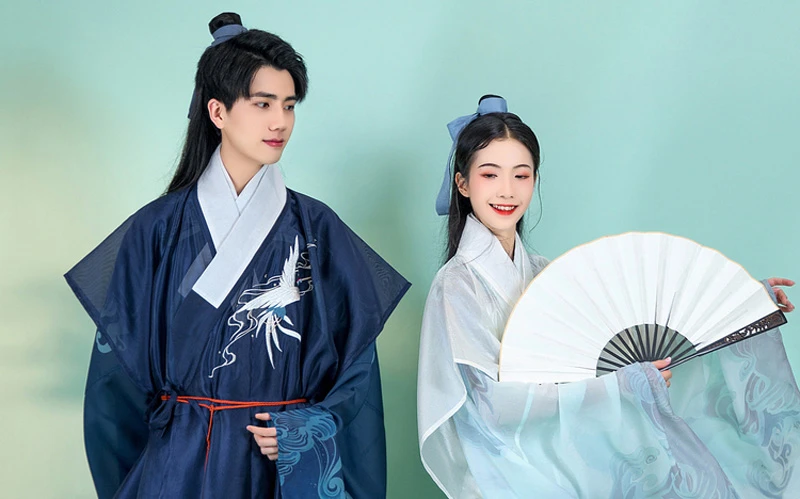
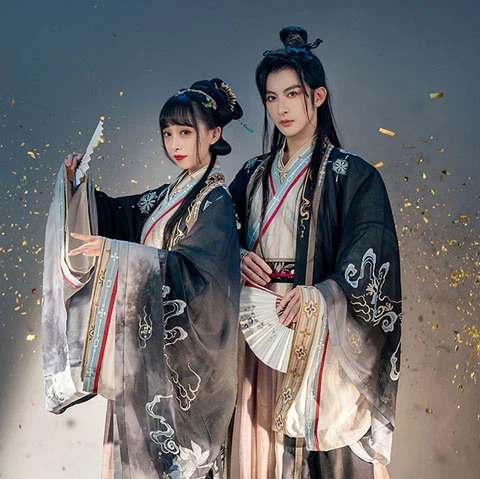

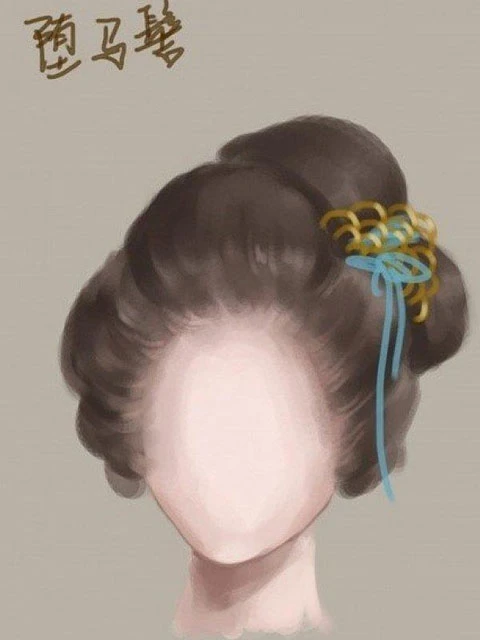
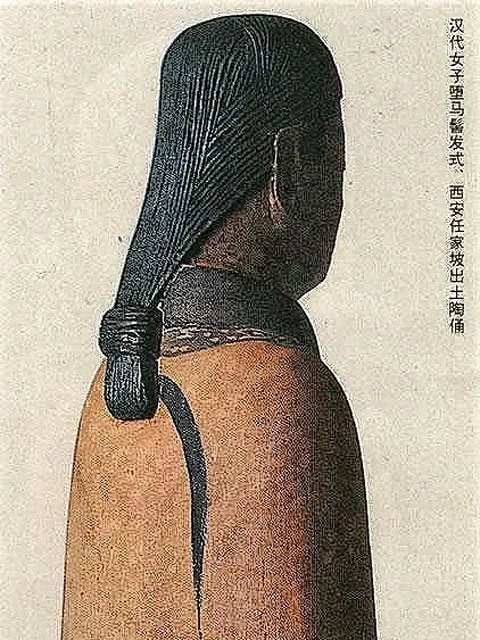
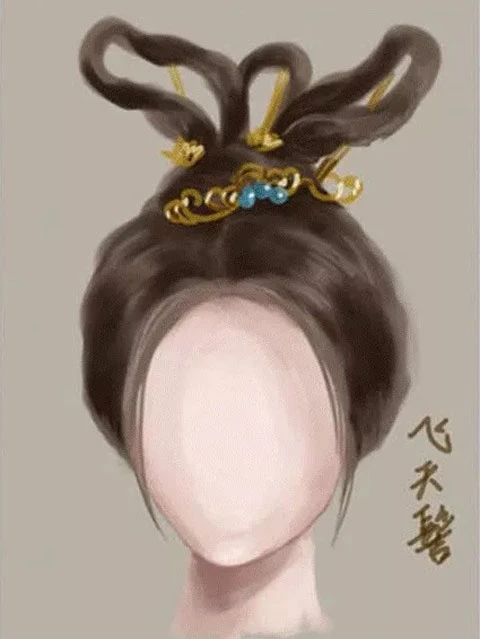
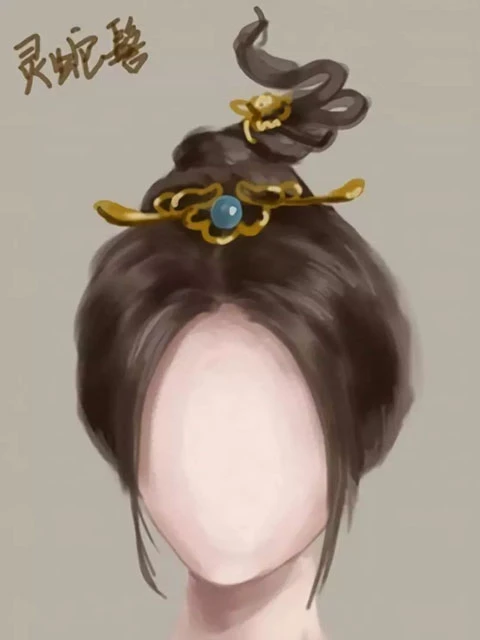
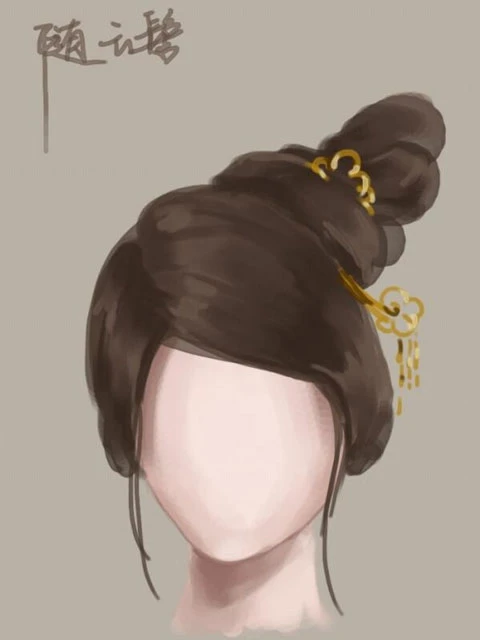
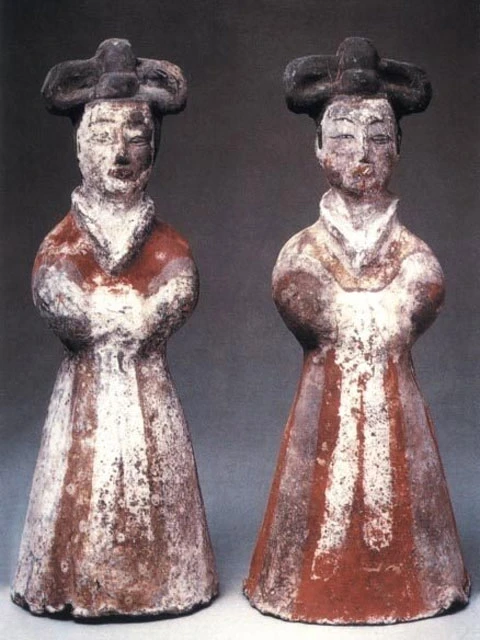
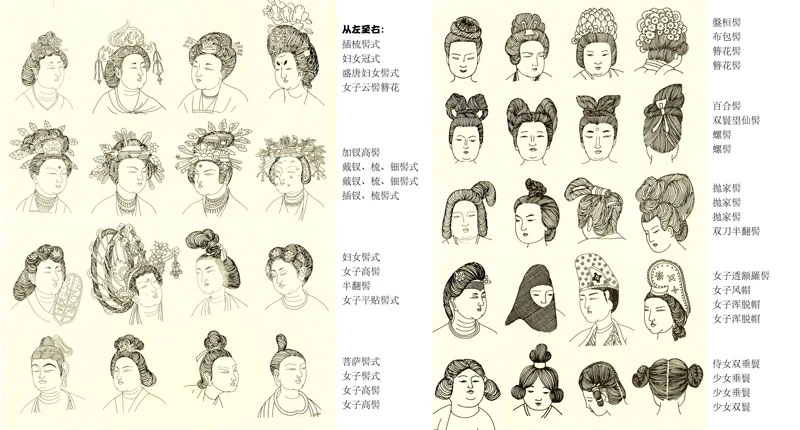
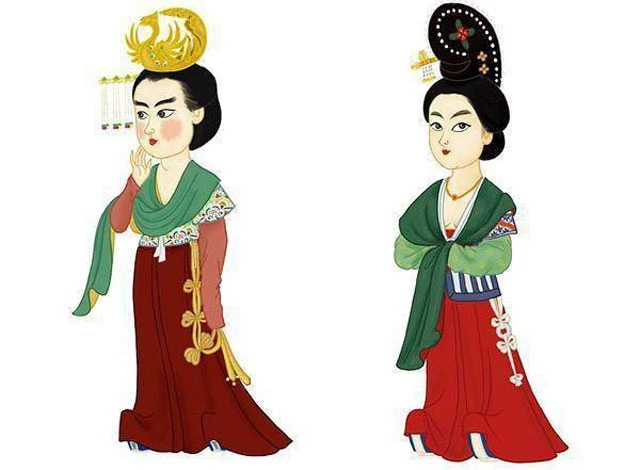
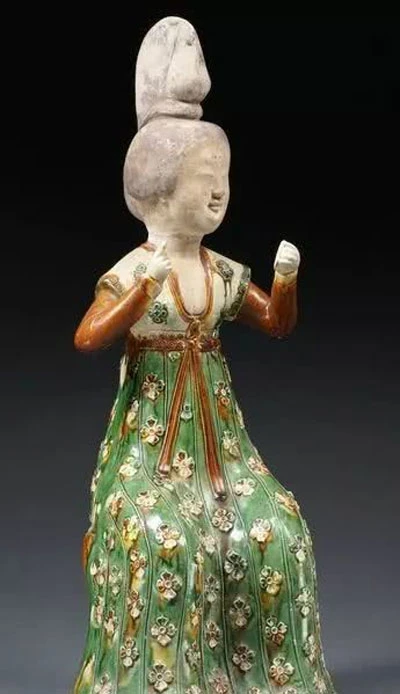
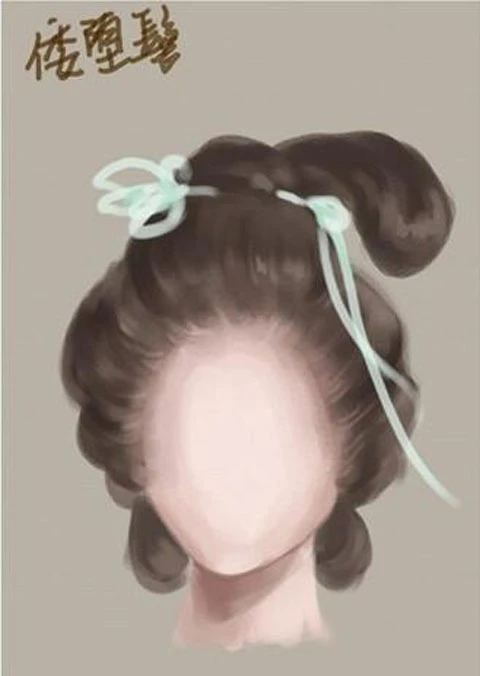
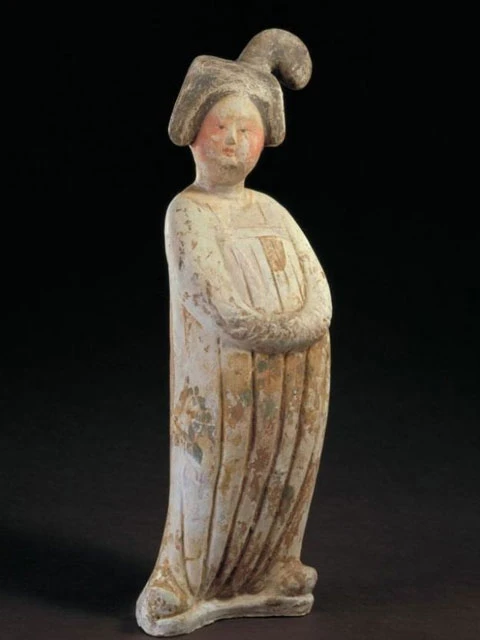
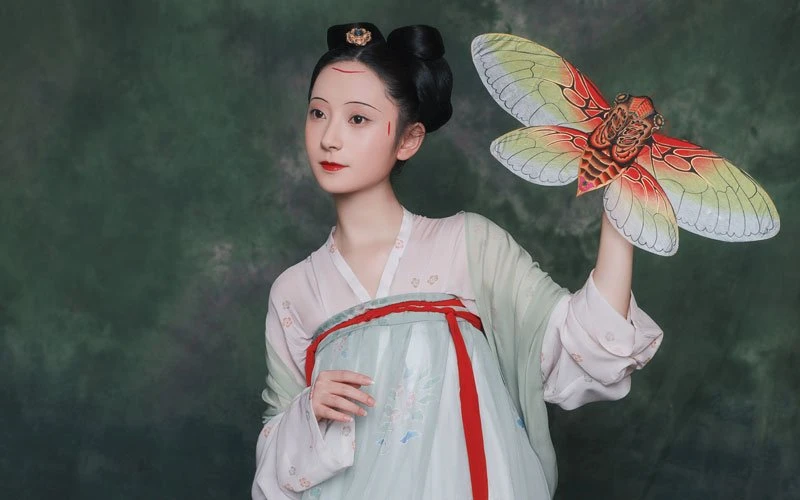
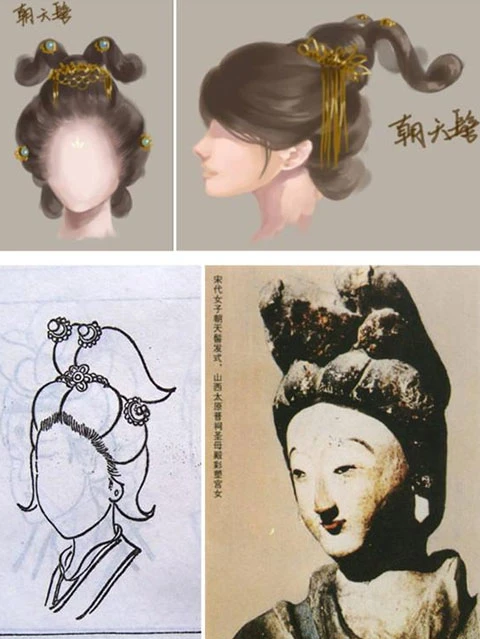
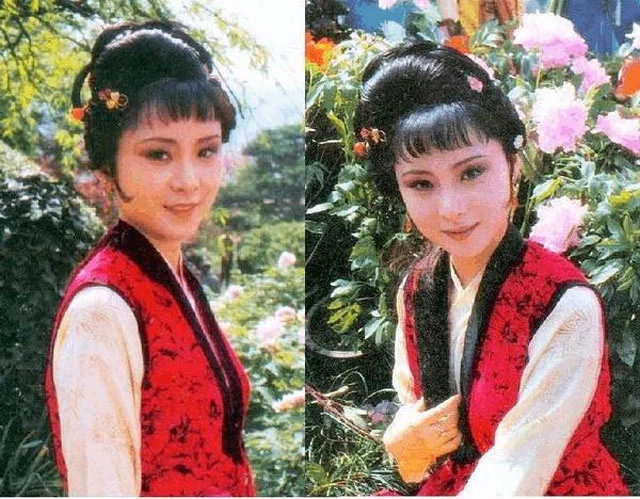
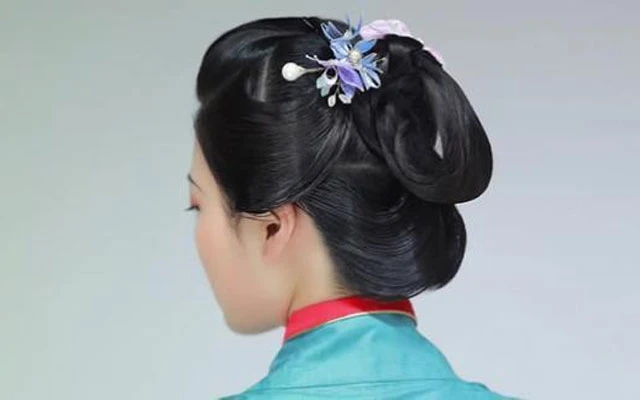
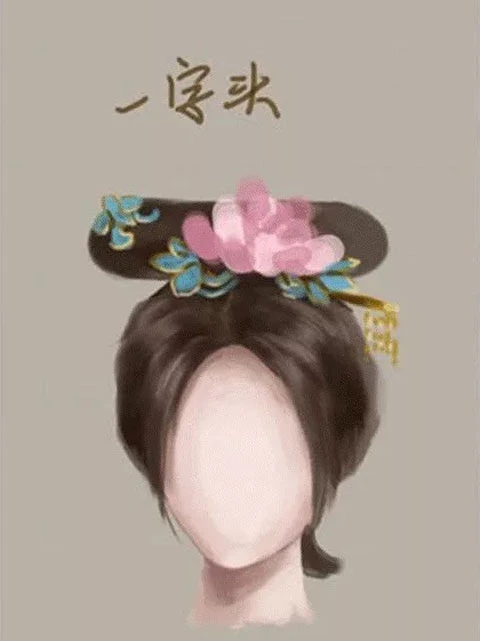
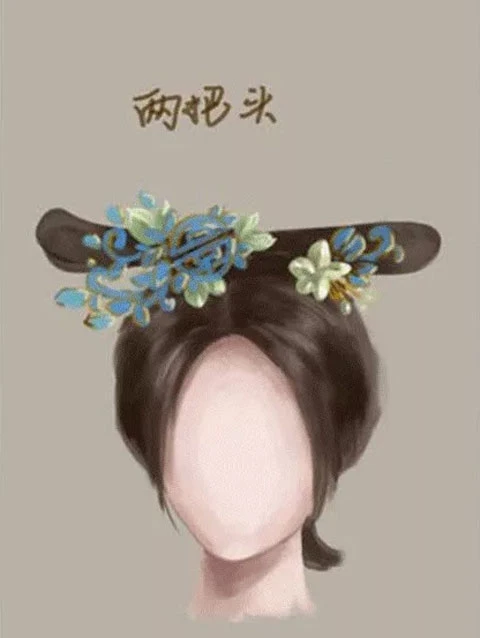
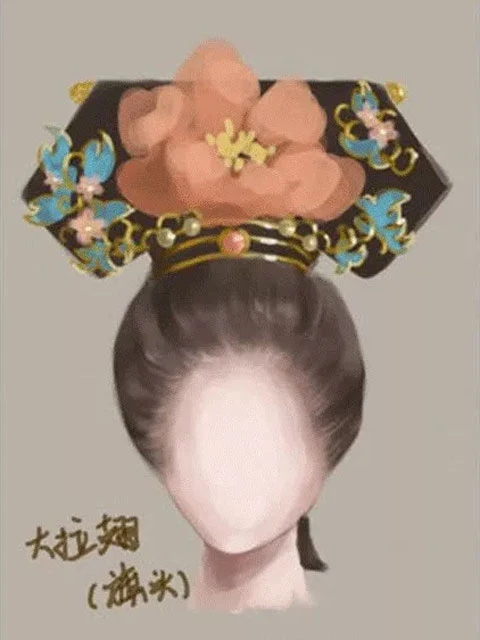

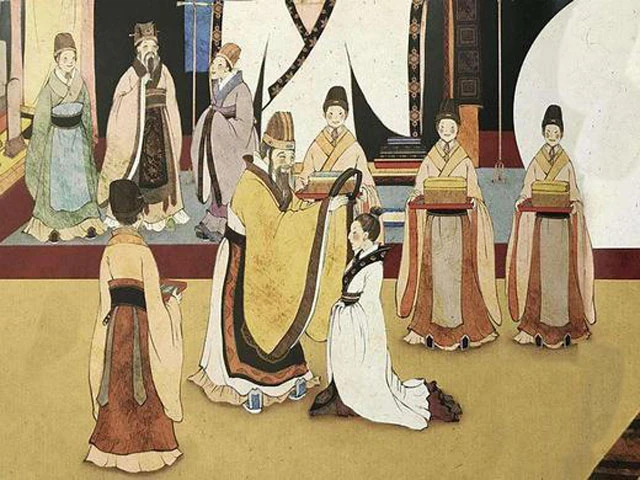
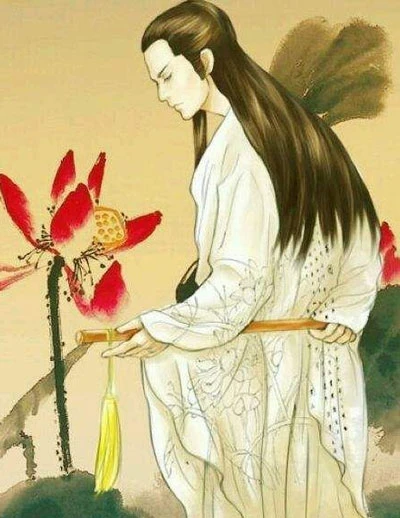
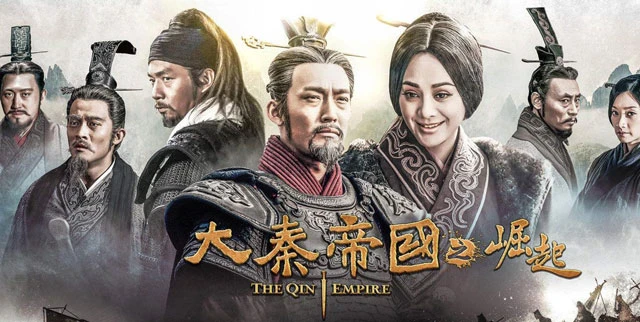
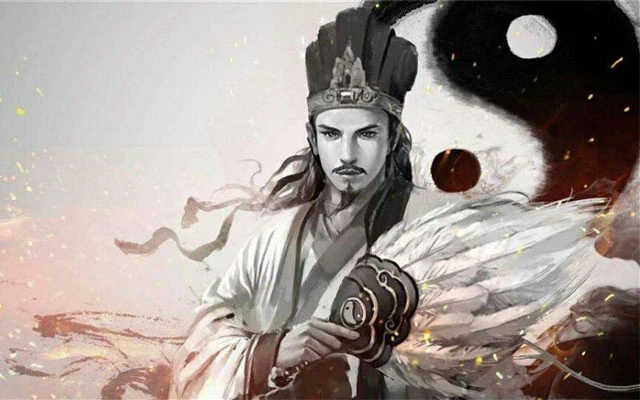

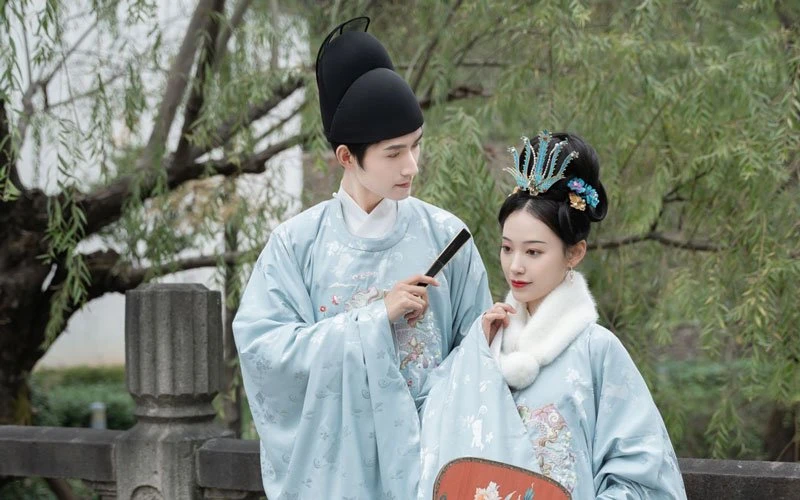
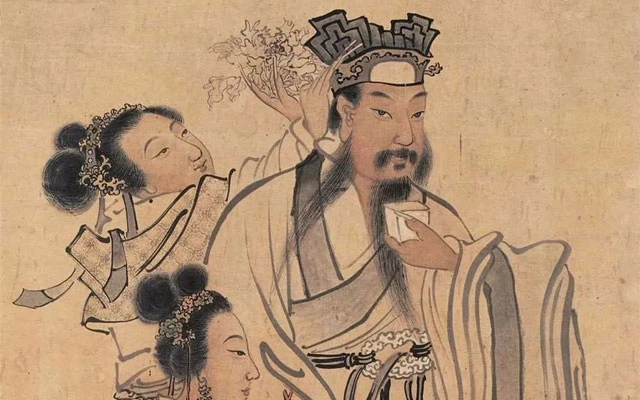
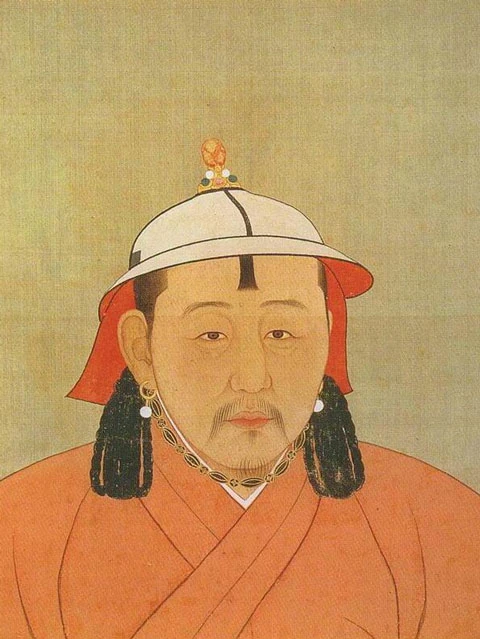
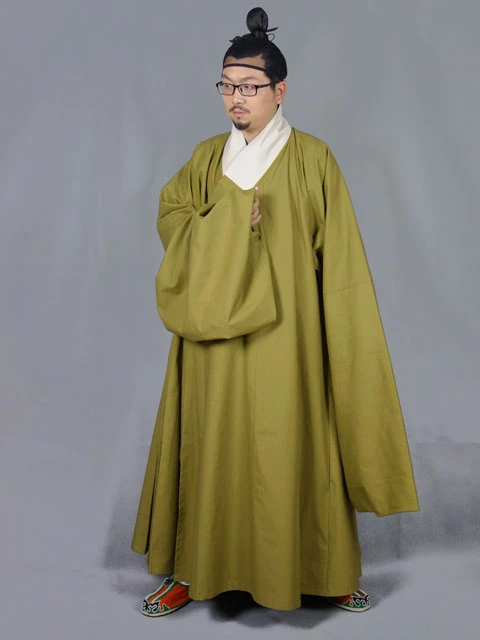
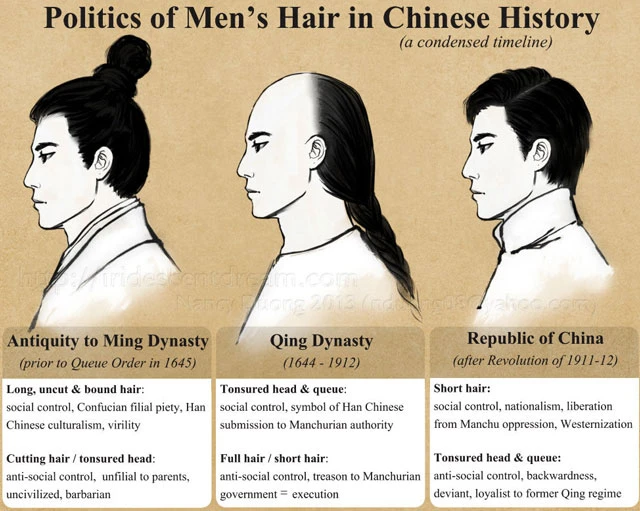
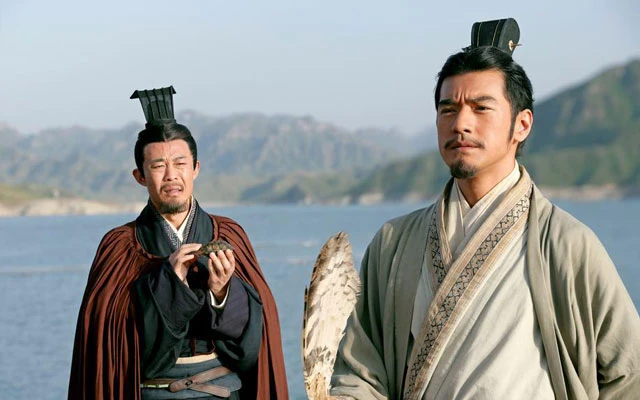
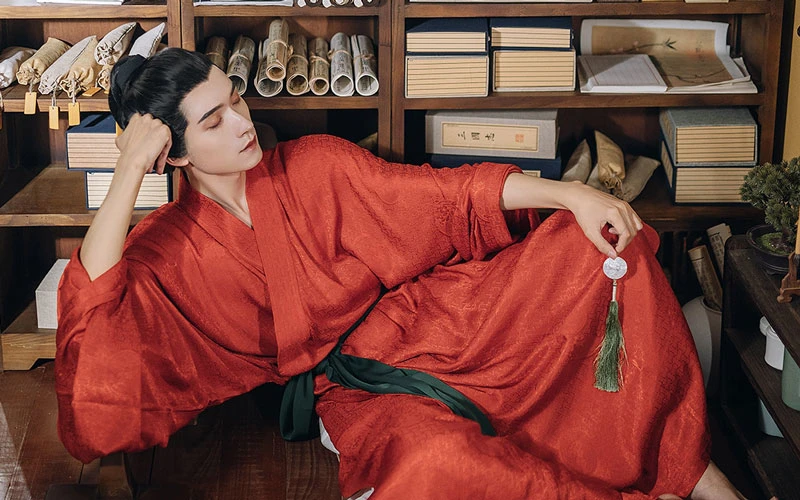
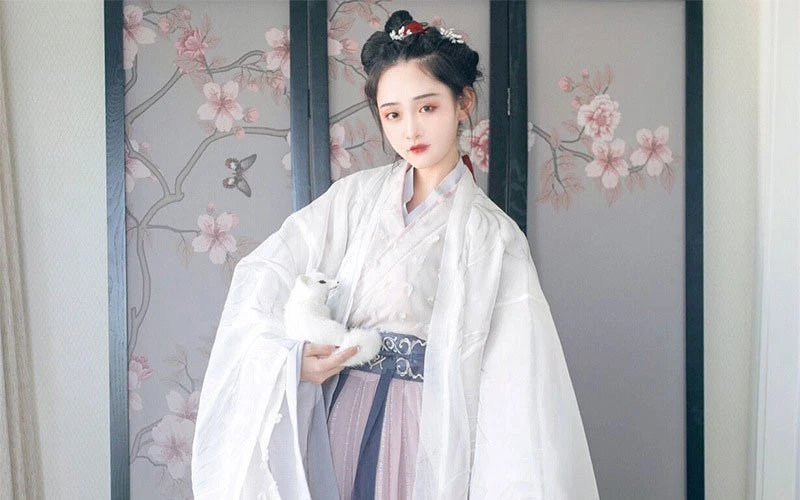
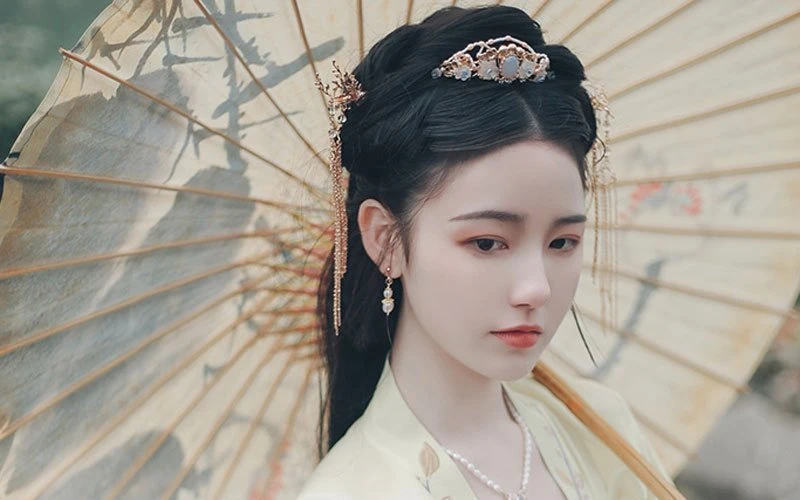

Thank you for sharing. The hair-dos are just wonderful.
The paintings of women hairstyles are so cute! 🙂 Great article!
😍😍😍
Unik
I have never heard of Yuan Dynasty before but I do see the hairstyle in the dramas
Well, men's hanfu hair styles are really less😂😂
👍